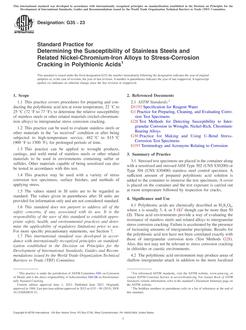
ASTM D7100-05
1.1 This test method covers hydraulic conductivity compatibility testing of saturated soils in the laboratory with aqueous solutions that may alter hydraulic conductivity (for example, waste related liquids) using a flexible-wall permeameter. A hydraulic conductivity test is conducted until both hydraulic and chemical equilibrium are achieved such that potential interactions between the soil specimen being permeated and the aqueous solution are taken into consideration with respect to the measured hydraulic conductivity.
1.2 This test method is applicable to soils with hydraulic conductivities less than approximately 1 x 10-8 m/s.
1.3 In addition to hydraulic conductivity, intrinsic permeability can be determined for a soil if the density and viscosity of the aqueous solution are known or can be determined.
1.4 This test method can be used for all specimen types, including undisturbed, reconstituted, remolded, compacted, etc. specimens.
1.5 A specimen may be saturated and permeated using three methods. Method 1 is for saturation with water and permeation with aqueous solution. Method 2 is for saturation and permeation with aqueous solution. Method 3 is for saturation with water, initial permeation with water, and subsequent permeation with aqueous solution.
1.6 The amount of flow through a specimen in response to a hydraulic gradient generated across the specimen is measured with respect to time. The amount and properties of influent and effluent liquids are monitored during the test.
1.7 The hydraulic conductivity with an aqueous solution is determined using procedures similar to determination of hydraulic conductivity of saturated soils with water as described in Test Methods D 5084. Several test procedures can be used, including the falling headwater-rising tailwater, the constant-head, the falling headwater-constant tailwater, or the constant rate-of-flow test procedures.
1.8 The standard units for the hydraulic conductivity values are the SI units, unless other units are specified. Hydraulic conductivity has traditionally been expressed in cm/s in the U.S., even though the official SI unit for hydraulic conductivity is m/s.
1.9 This standard contains a Hazards section related to using hazardous liquids (Section 7).
1.10 This standard does not purport to address all of the safety concerns, if any, associated with its use. It is the responsibility of the user of this standard to establish appropriate safety and health practices and determine the applicability of regulatory limitations prior to use.
Product Details
- Published:
- 11/15/2005
- Number of Pages:
- 17
- File Size:
- 1 file , 290 KB

